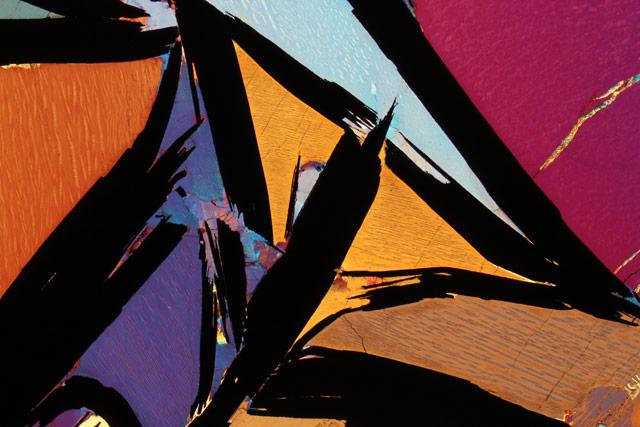Photographing the Microscopic World
Like any other talented photographer, Bernardo Cesare combines skilled use of lenses and light with his own judgment and timing to capture striking images. His photographs investigate the history of the earth and expose the mysteries of its formation. His work fits into a tiny niche in the world of photography: micrographic art. He uses an optical microscope to extend the reach of his camera. After all, what is a microscope but a more powerful set of lenses?
Cesare is a petrologist: a geologist who studies rocks. The tools of his trade are a light microscope and slivers of rocks shaved down to a thickness of just 0.03mm. When he passes polarized light (which vibrates differently than regular white light) through the sample, variations show up as different colors, revealing structure and composition. While he has built his scientific career by analyzing these images, it is not just the information that he values, but their beauty as well.
He’s not alone in his appreciation of the aesthetic potential of the microscopic world. Microscopes have been at the core of scientific discovery for hundreds of years and as soon as it became possible to aim a camera through the microscopes, the first photomicrographs were made. Techniques available to micrographers have expanded and digital photography has made the production of photomicrographs far less expensive.
The result is a thriving community of professionals and enthusiasts seeking beauty through the lenses of their microscopes. Competitions sponsored by Nikon and Olympus promote their work as an artistic, as well as educational, endeavor.
The Nikon Small World competition began in 1974, and the Olympus BioScapes competition followed more recently, in 2003, rewarding photomicrographers with thousands of dollars worth of equipment. In addition to the aesthetics of the images, technical expertise and scientific value are taken into account when the entries are judged.
Both BioScapes and Small World host full galleries from the competitions over the years. In addition, Small World posts a daily quiz of micrographic images (is that zebrafish olfactory bulbs, rat embryo eye buds, or finch testicles?).
Over the years, winning images have been produced not just by scientists, but by hobbyists as well — including four of the images featured in the slideshow below.
Entries to this year’s Nikon competition must be submitted by April 30, 2012, and to the Olympus BioScapes competition by September 30, 2012.
Slideshow: Micrographic Art
Every day, reporters and producers at The World are hard at work bringing you human-centered news from across the globe. But we can’t do it without you. We need your support to ensure we can continue this work for another year.
Make a gift today, and you’ll help us unlock a matching gift of $67,000!
